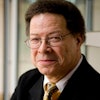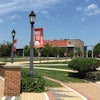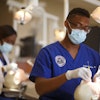SIOUX FALLS S.D.
More than 6,000 people are enrolled in health-related
programs at South Dakota’s public
universities and technical schools, but those in the know say that’s still not
enough.
“Take a look at pharmacy,” said Paul Marso, vice
president of human resources at St. Mary’s Healthcare Center in Pierre.
“We have one pharmacy school in South Dakota that turns out 60 or 70
pharmacists a year. It’s just not enough.”
Pharmacists get snatched up, just like other health care
students, because of the high demand for professionals in all areas of the
medical field, he said.
“I think there is a fairly good number of students
going into the field overall, but the demand just continues to increase,”
Marso said.
South Dakota’s public university system actually had an
increase of more than 500 students enroll in health-related fields of study
last spring while technical schools remained steady with full classrooms.
Trevor Holleman, 19, of Platte, is majoring in biology at
the University of Sioux Falls and plans on applying for medical school or
dental school soon.
“The health field is something that isn’t going to go
away,” he said. “There’s always going to be a need for doctors and
everything that has to do with health.”
Holleman said he will probably stay in the state if he
chooses medical school, but dental school is a harder choice because there
aren’t any in South Dakota.
“I wouldn’t mind coming back to South Dakota after I
graduate,” he said. “People who go to school out of state tend to get
a job out of state.”
Figures gathered by the Board of Regents show that more than
4,800 students were enrolled in health-related academic programs in the state’s
six public universities. The four technical institutes had 1,241 students
enrolled in post-secondary health care programs.
Shelby Frame, health science specialist for the state
Department of Education, said the flexibility of the four technical institutes
in the state is helping.
“We’re working with the health industry to find
competent workers to fill those positions out there,” Frame said.
This fall a health-career cluster will help attract more
students, she said. Five pathways, including biotechnology and diagnostic
research, will focus on getting students involved with health care
professionals and show them what jobs are available, Frame said.
“The popularity of these careers is on the rise,”
Tad Perry, Board of Regents executive director, said in a release. “We
will need all of those students and many more to meet critical work force needs
facing the health care industry.”
Janelle Toman, director of information and institutional
research for the Board of Regents, said the need for health care professionals
is especially apparent in South Dakota because of its aging population.
“Our average age in South Dakota is increasing every
year and as the Baby Boomers began to age, obviously more healthcare services
are in demand,” she said.
According to the U.S. Census Bureau, 14.2 percent of the
state’s population was 65 or older in 2005 figures nearly two percentage points
higher than the national average.
Board of Regents data also confirmed that more than half the
students pursuing health care careers are concentrating on nursing in public
universities.
“Nursing is the front-line caregivers that tend to deal
with most of the aging population,” Toman said. “In many of the
smaller communities, it’s nurses and nurse practitioners that are in a lot of
the direct health care.”
Nearly 2,800 students are enrolled in nursing programs
throughout the state.
– Associated Press
© Copyright 2005 by DiverseEducation.com


















